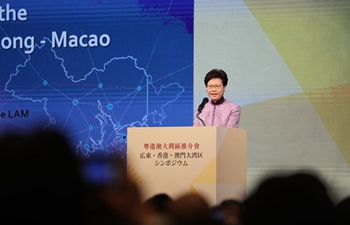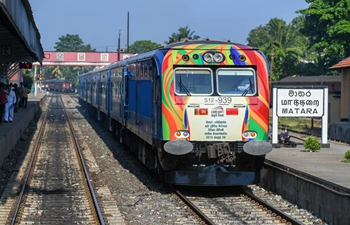MANILA, April 10 (Xinhua) -- Poverty incidence in the Philippines has decreased 6.6 percentage points to 21.0 percent during the first half of 2018 from the adjusted 27.6 percent during the first half of 2015, the Philippine Statistics Authority (PSA) said on Wednesday.
In terms of poverty incidence among the population, PSA Assistant Secretary Josie Perez said 21 out of 100 Filipinos were living in poverty in the first semester of 2018. "This is a significant reduction from about 28 out of 100 Filipinos in poverty in the same period of 2015," she told a news conference.
Over the course of three years, the PSA said that poverty decreased substantially due to sustained economic growth and critical and broad-based reforms and investments that have translated into employment generation and social protection.
Philippine National Economic and Development Authority (NEDA) Undersecretary Adoracion Navarro said growth in the construction and manufacturing sectors created more employment opportunities for Filipinos. "We like to highlight the increase in income of Filipino households, as well as employment shifts to the industry and service sectors from agriculture," she said.
While inflation rose to 8.1 percent in the period of 2015 to 2018 from 7.8 percent in 2012 to 2015, she said the growth of average income accelerated considerably to 21.2 percent from 15.3 percent.
Importantly, she said growth in per capita income of the bottom 30 percent of households picked up significantly to 29.2 percent in the 2015 to 2018 period from only 20.6 percent in the 2012 to 2015 period.
"This implies an increase in real incomes of the poor, which has helped in reducing poverty among Filipinos," Navarro said.
In particular, she said the growing contribution of industry, particularly construction and manufacturing, to output and employment, are creating more income-earning opportunities that are accessible to the poor.
Moreover, Navarro said the reduction in poverty is "fairly broad-based."
"Regional disparity eased as all regions, except the National Capital Region, saw a drop in poverty incidence. Eight regions recorded poverty incidence below the national average, four of which posted a single-digit poverty incidence," Navarro said.
"We recognize that many challenges remain, and the resolve to reduce inequality does not end," she added.
Moving forward, she said the government has to take advantage of the momentum it has built in recent years, while earnestly pursuing other key reforms.
She also stressed the need to sustain the peace-building efforts, especially in the Bangsamoro Autonomous Region in Muslim Mindanao (BARMM), to encourage economic growth in the impoverished southern region.
"We are optimistic that the implementation of the Bangsamoro Organic Law will introduce a new chapter of peace in the region and in the history of the Philippines," Navarro said.













